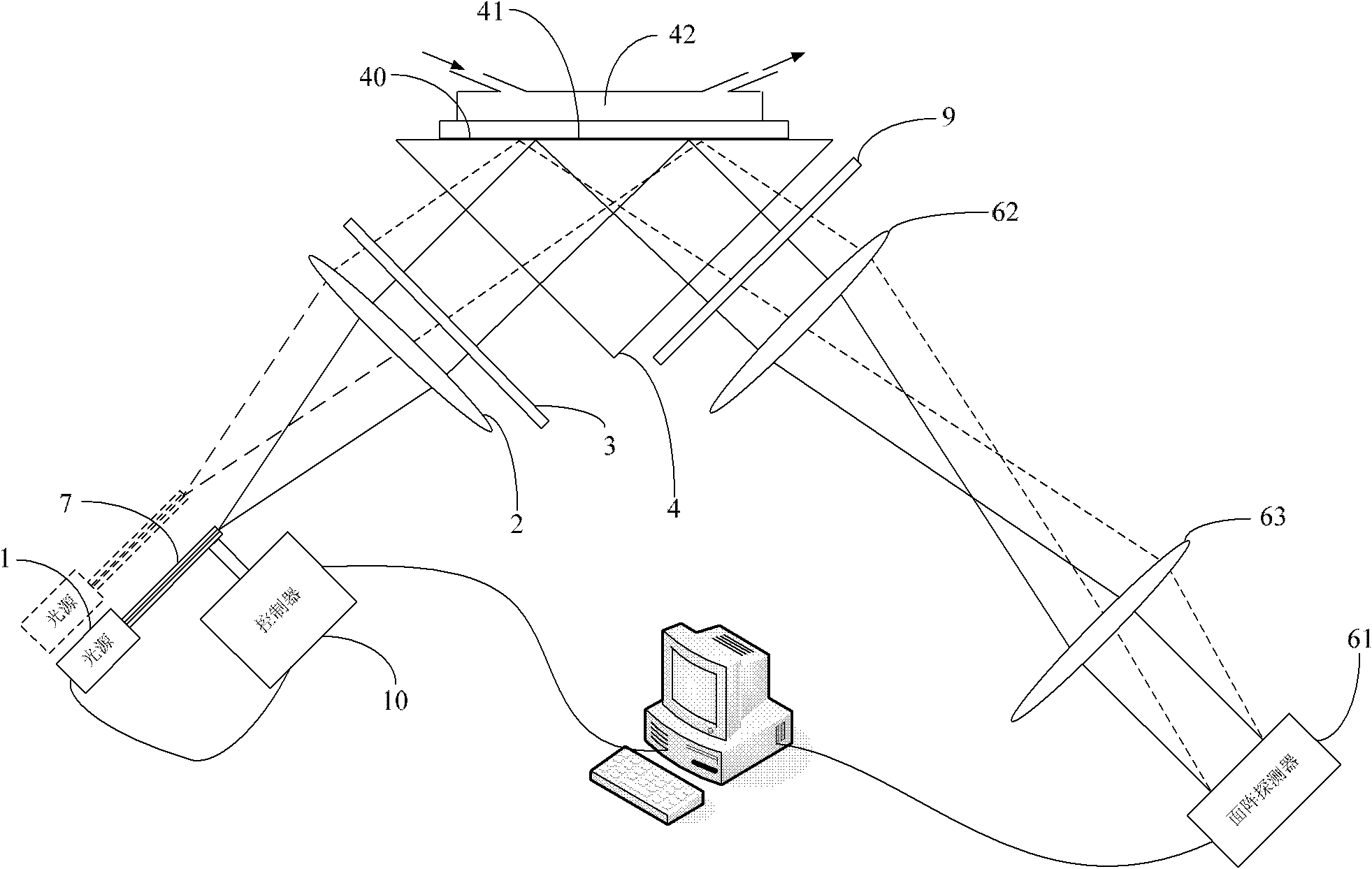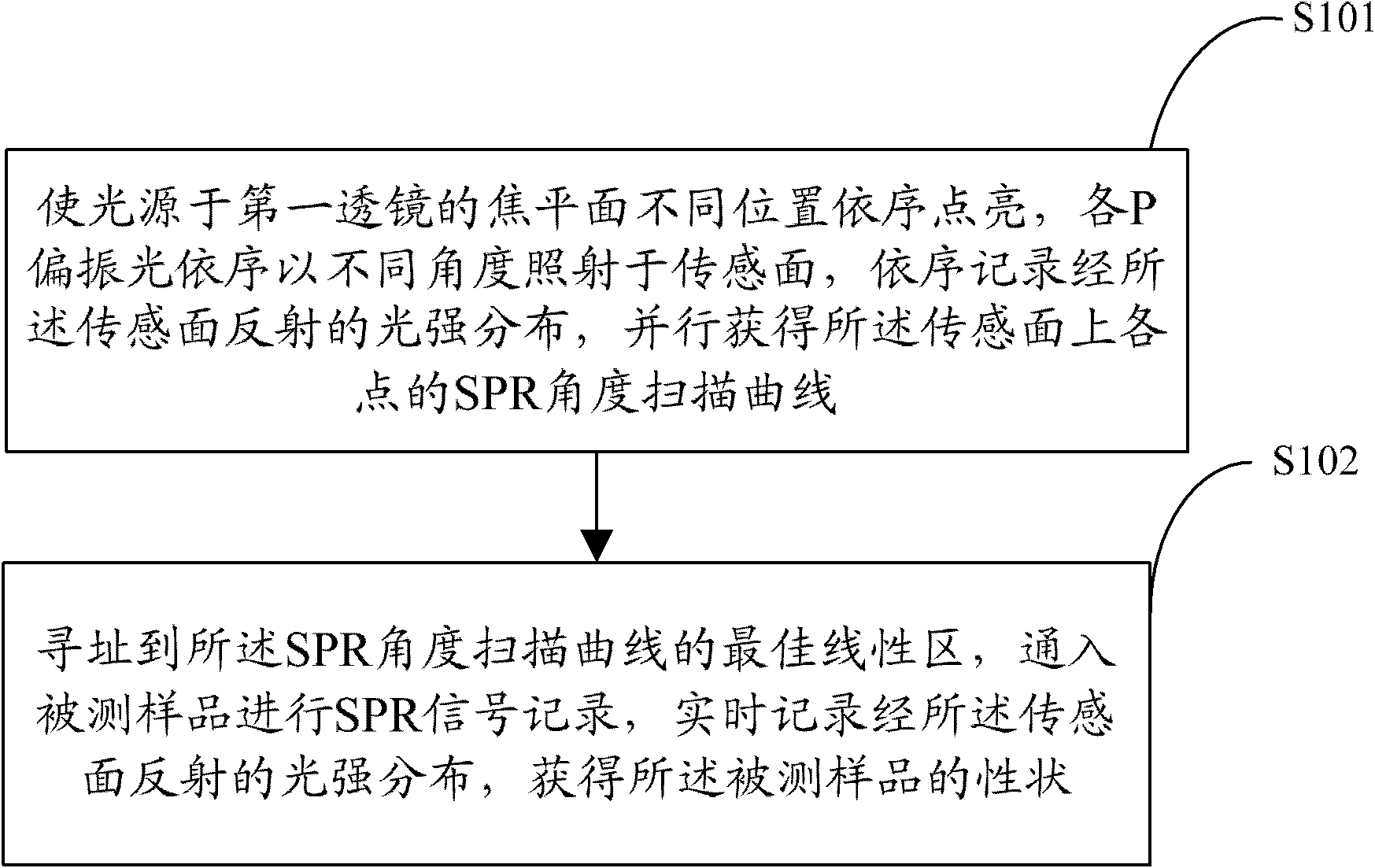System and method for surface plasmon resonance sensing detection
A surface plasma and detection system technology, applied in the field of photoelectric detection, can solve problems such as poor stability, achieve good stability, and improve detection speed and accuracy.
- Summary
- Abstract
- Description
- Claims
- Application Information
AI Technical Summary
Problems solved by technology
Method used
Image
Examples
Embodiment 1
[0033] figure 1 The structure of the surface plasmon resonance sensing detection system provided by the embodiment of the present invention is shown, and for the convenience of description, only the parts related to the embodiment of the present invention are shown. The surface plasmon resonance sensing detection system includes a light source 1, a first lens 2, a polarizer 3, a prism 4, a controller 5 and an imaging mechanism.
[0034] In the embodiment of the present invention, the light source 1 first generates sensing light, wherein the sensing light is preferably a narrow-band laser, and is generally generated by a laser as a light source. There are multiple light sources, and in order to output each sensing light to the focal plane of the first lens, the narrow-band laser light generated by each light source is transmitted by the optical fiber 7, so there are multiple optical fibers, and the multiple optical fibers form a dense optical fiber array. The narrow-band laser...
Embodiment 2
[0042] figure 2 The structure of the surface plasmon resonance sensing detection system provided by the embodiment of the present invention is shown, and for the convenience of description, only the parts related to the embodiment of the present invention are shown.
[0043] In the embodiment of the present invention, the multiple light sources in the first embodiment are replaced by scanning the section of the optical fiber, that is, the controller 10 controls the optical fiber 7 to scan one step, the light source 1 lights up once, and the imaging mechanism generates an image, which is equivalent to switching to different light sources. In this way, only one light source is needed to complete the SPR angle scanning, which greatly reduces the cost.
[0044] image 3 The implementation flow of the surface plasmon resonance sensing detection method provided by the embodiment of the present invention is shown. For the convenience of description, only the parts related to the e...
PUM
 Login to View More
Login to View More Abstract
Description
Claims
Application Information
 Login to View More
Login to View More - R&D
- Intellectual Property
- Life Sciences
- Materials
- Tech Scout
- Unparalleled Data Quality
- Higher Quality Content
- 60% Fewer Hallucinations
Browse by: Latest US Patents, China's latest patents, Technical Efficacy Thesaurus, Application Domain, Technology Topic, Popular Technical Reports.
© 2025 PatSnap. All rights reserved.Legal|Privacy policy|Modern Slavery Act Transparency Statement|Sitemap|About US| Contact US: help@patsnap.com



